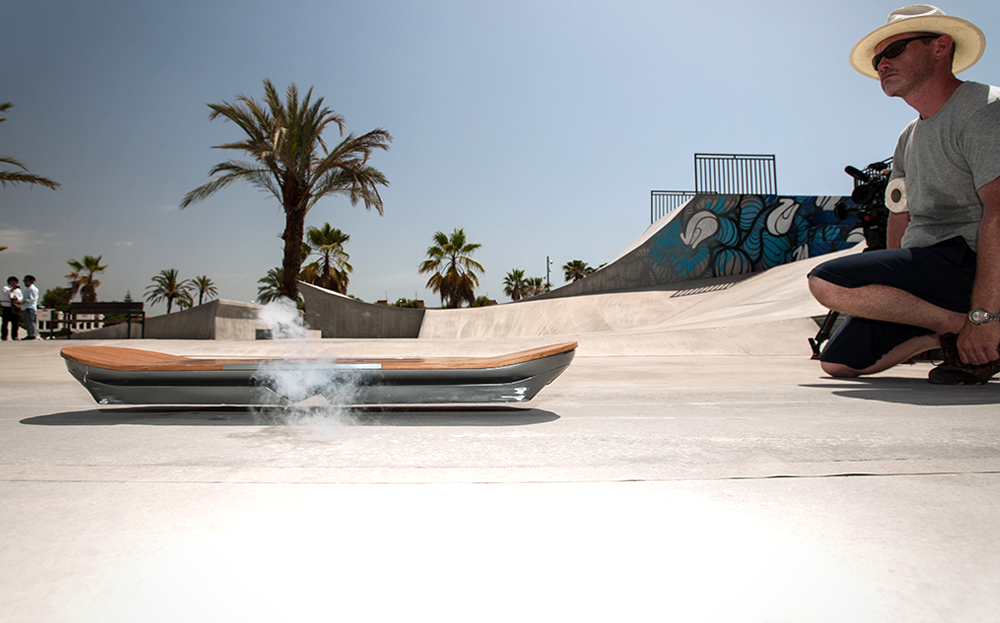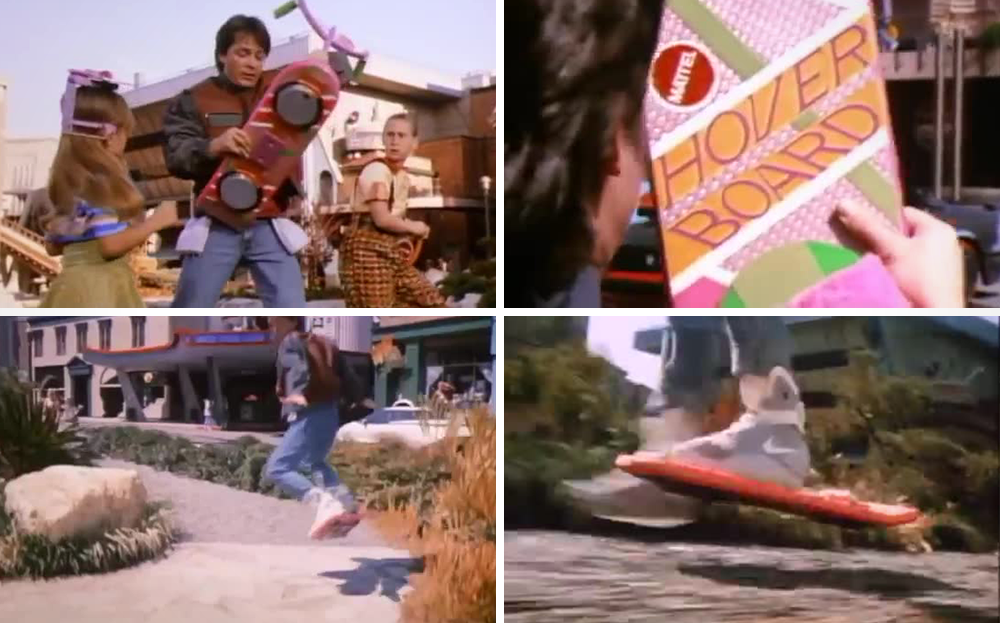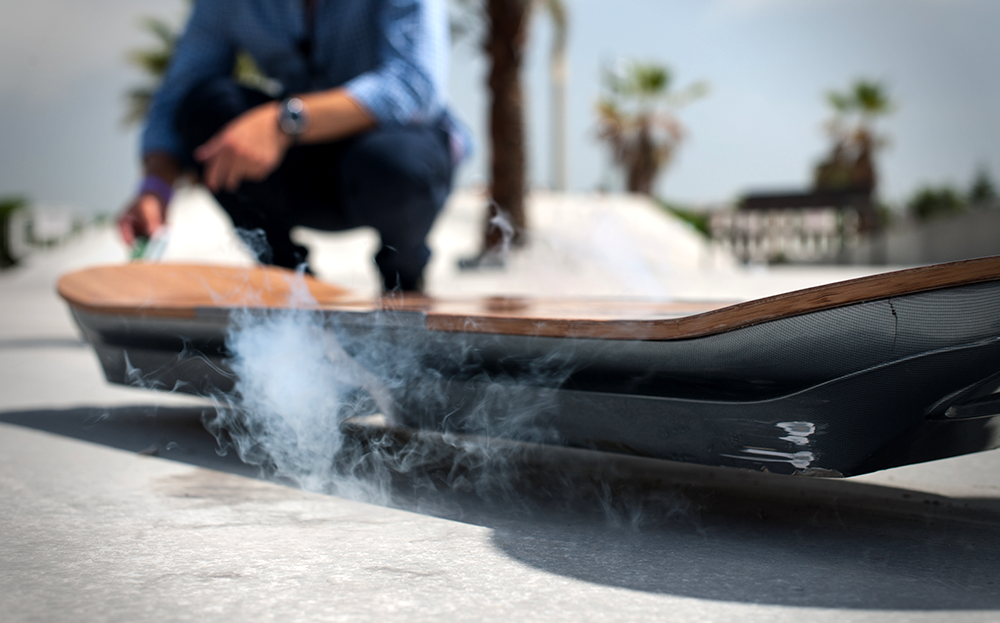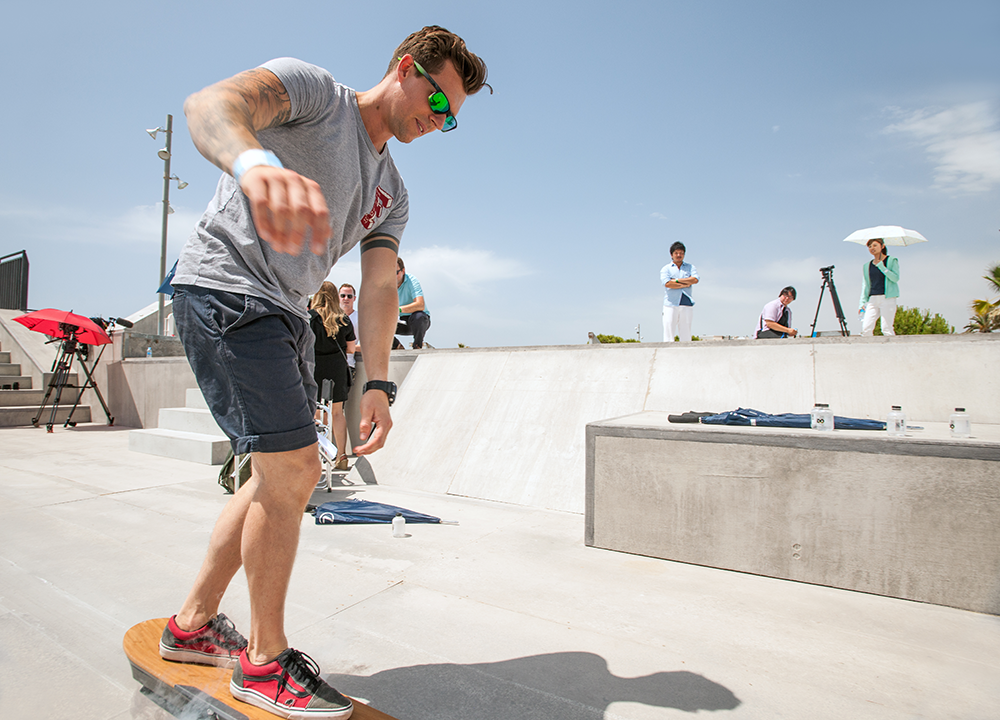Hey, Lexus, we need to borrow your . . . hoverboard
The future still hasn't arrived

FLYING CARS, self-drying jackets, “sneakers” that fasten themselves, instant messages via fax: Back to the Future Part II, which was released in 1989 but set predominantly in the futuristic world of today, October 21, 2015, is remembered for many things.
Click to read car REVIEWS or search NEW or USED cars for sale on driving.co.uk
But arguably the most celebrated future device portrayed in the film, other than the DeLorean time machine, of course, is the hoverboard. In the film Marty McFly must escape the clutches of Biff Tannen and his goons and borrows what he believes to be a skateboard, only to find it has no wheels and hovers just above the ground.

It’s a fantastically exciting idea, and one that has remained firmly in the realm of science fiction … until now.
The breakthrough seemed to come from Lexus. The car maker has released a promotional video called Slide, which depicts the professional British skateboarder Ross McGouran apparently hovering with reckless abandon around a skate park on the outskirts of Barcelona.
Of course, all is not what it seems. “The whole thing is an elaborate magic trick,” explains Henry-Alex Rubin, the award-winning director behind the video. “There is no CGI and there are no strings or ropes attached, but there are a few secrets behind how it all works.”
Key to the magic is a skate park crafted from thin plywood that has been painted to look like concrete. Underneath the wooden facade is a track of powerful magnets designed to repel the board. So Lexus’s hoverboard won’t work outside its bespoke skate park.
The technology is similar to that used in magnetic levitation (Maglev) trains in China, Japan and Korea: the carriages hover above the tracks, allowing increased speed through reduced friction, as well as reduced electricity consumption.

“The difference here is that our hoverboard doesn’t require electricity, nor does it have any moving parts,” explains Oliver de Haas, the brains behind the project, from the German engineering firm Evico.
“The board features a type II superconductor, which contains 32 cells made up of yttrium, barium and copper oxide,” he adds.
The engineers then place the board on a piece of magnetic track and pour liquid nitrogen into a filling hole. This process “freezes” the magnetic field into the superconductor and allows the board to hover above the surface of the track, while emitting a cool, futuristic smog of nitrogen from its flanks.
Theoretically, the board does hover and it can be ridden with friction-free glee, but stepping aboard reveals it is almost impossible to operate. It tilts on its centre axis and scrubs the ground, forcing wannabe McFlys to spectacularly graze palms, twist ankles or worse. Just ask McGouran: he nearly broke his leg during filming.

How to sum up the experience? Imagine riding a small skateboard that’s sliding along a tightrope at high speed, and you are almost there. It’s difficult and it hurts.
Like self-lacing Nike trainers and dog-walking robots, commercially viable hoverboards remain in the realms of science fact. And for that, our ankles are thankful.
Click to read car REVIEWS or search NEW or USED cars for sale on driving.co.uk




